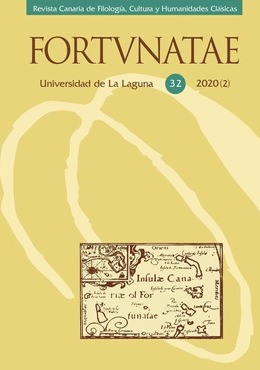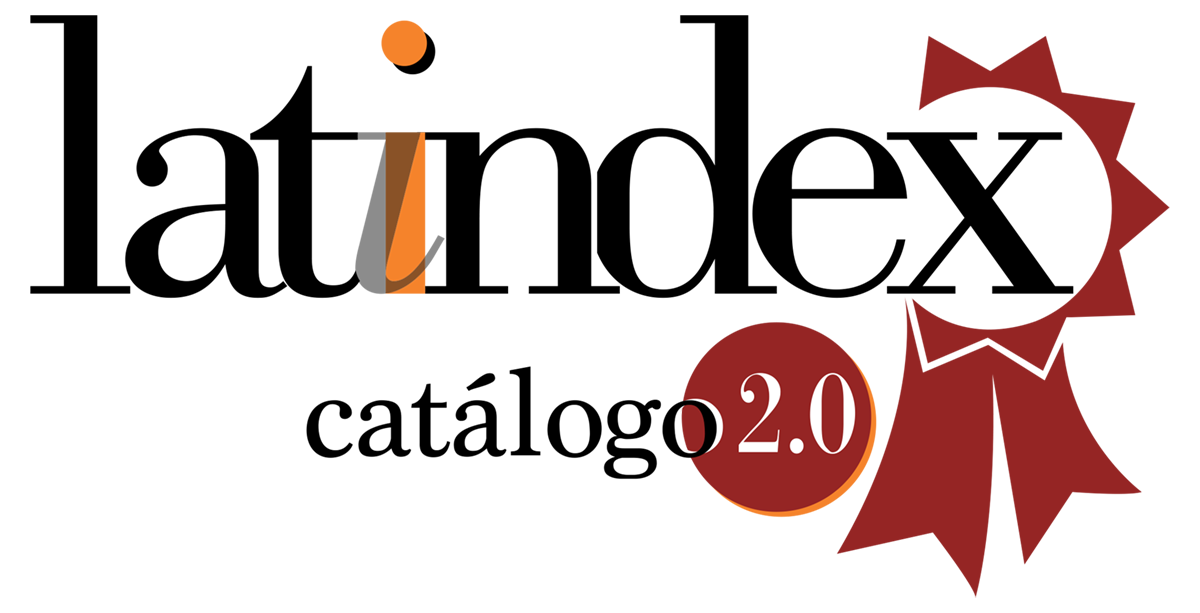Formación e historia del verbo μελαγχολάω
Resumen
En este trabajo se traza la historia, desdeHomero hasta el Corpus Hippocraticum, de χολή / χόλος y los compuestos y derivados a que dan lugar, desde el punto de vista de su uso en los textos.
Citas
ALAMILLO, A. (1981): Sófocles. Tragedias, Gredos, Madrid.
ÁNGEL ESPINÓS, J. (ed.) (2020): Seis estudios sobre la lengua del Corpus Hippocraticum, Escolar y Mayo, Madrid.
AUSTIN, C. (1973): Comicorum graecorum fragmenta in papyris reperta, de Gruyter, Berlin.
BEEKES, R. (2010): Etymological dictionary of Greek, Brill, Leiden-Boston.
BERNARDINI, P. (1995):«Commento XI», en B. GENTILI - P. BERNARDINI - E. CINGANO - P. GIANNINI, Pindaro, le Pitiche, Mondadori, Verona, pp. 647-670.
BROCKMANN, Ch. - BRUNSCHÖN, W. - OVERWIEN, O. (eds.) (2009): Antike Medizin im Schnittpukt von Geistes- und Naturwissenschaften. Internationale Fachtagun aus Anlass des 100-jährigen Bestehens de Akademienvorhabens Corpus Medicorum Graecorum / Latinorum, de Gruyter, Berlin-New York.
CHANTRAINE, P. (1933): La formation des noms en Grec ancien, Champion, Paris.
CHANTRAINE, P. (1958): Grammaire homérique. Phonetique et morphologie, Klincksieck, Paris.
CHANTRAINE, P. (1968-1980): Dictionnaire étymologique de la langue grecque, Klincksieck, Paris.
CABELLOS, B. (1986): «Apéndice a Sobre la dieta en las enfermedades agudas», en C. GARCÍA GUAL - J. M. LUCAS DE DIOS - B. CABELLOS ÁLVAREZ - I. RODRÍGUEZ ALFAGEME, Tratados hipocráticos III. Sobre la dieta, Sobre las afecciones, Apéndice a Sobre la dieta en las enfermedades agudas, Sobre el uso de los líquidos, Sobre el alimento, Gredos, Madrid, pp. 179-212.
COLLARD, F., SAMAMA, E. (ed.) (2012): Dents, dentistes et art dentaire. Histoire, pratiques et représentations, Antiquité, Moyen Âge, Ancien Régime, L'Harmattan, Paris.
DEICHGRÄBER, K. (1933 [1971]): Die Epidemien und das Corpus Hippocraticum, de Gruyter, BerlinNew York.
DEMONT, P. (2004): «Les humeurs: une question de goût», en J. LECLANT - J. JOUANNA (éd.), La médecine grecque antique. Cahiers de la Villa Kérylos 15: 53-69.
DI BENEDETTO, V. (1986): Il medico e la Malattia. La scienza de Ippocrate, Einaudi, Torino.
EIJK, Ph. J., VAN DER (1990): «Aristoteles über die Melancholie», Mnemosyne 43: 33-72. E
SPINOSA ESPINOSA, P. (2020): «Los adjetivos en -ώδης en el Corpus Hippocraticum: clasificación y función», en J. ÁNGEL ESPINÓS (ed.), Seis estudios sobre la lengua del Corpus Hippocraticum, Escolar y Mayo, Madrid.
ESTEBAN SANTOS, A. (1989):«Epidemias I y III»,en A. ESTEBAN SANTOS - E. GARCÍA NOVO - B. CABELLOS, Tratados hipocráticos V. Epidemias, Gredos, Madrid, pp. 22-127.
ESTEBAN SANTOS, A. - GARCÍA NOVO, E. - CABELLOS, B. (1989): Tratados hipocráticos V. Epidemias, Gredos, Madrid.
FLASHAR, H. (1966): Melancholie und Melancholiker in den medizinischen Theorien der Antike, de Gruyter, Berlin.
FUENTE RUIZ, S. DE LA (2002): «El sufijo griego -ωΔΗΣ: origen, valores y fortuna literaria», Myrtia 17: 7-43.
GAGNEPAIN, J. (1959): Les noms grecs en -ΟΣ et en -Α. Contribution a l´étude du genre en Indo-européen, Klincksieck, Paris.
GARCÍA GUAL, C. (1984): «Del melancólico como atrabiliario, según las antiguas ideas griegas sobre la enfermedad de la melancolía», Faventia 6: 41-50.
GARCÍA GUAL, C. - LUCAS DE DIOS, J. M. - CABELLOS ÁLVAREZ, B. - RODRÍGUEZ ALFAGEME, I. (1986): Tratados hipocráticos III. Sobre la dieta, Sobre las afecciones, Apéndice a Sobre la dieta en las enfermedades agudas, Sobre el uso de los líquidos, Sobre el alimento, Gredos, Madrid.
GENTILI, B. - BERNARDINI, P. - CINGANO, E. - GIANNINI,P.(1995):Pindaro, le Pitiche, Mondadori, Verona.
GENTILI, B. - CATENACCI, C. (2010): I poeti del canone lirico nella Grecia antica, Feltrinelli, Milano.
GENTILI,B.-CATENACCI,C.-GIANNINI,P.-LOMIENTO,L.(2013):Pindaro le Olimpiche, Mondadori,Verona.
GIANNINI, P. (2013): «Commento VI», en B. GENTILI - C. CATENACCI - P. GIANNINI - L. LOMIENTO, Pindaro le Olimpiche, Mondadori, Verona, pp. 445-474.
GIL, L. (2011): Aristófanes. Comedias II. Las nubes, Las avispas, La paz, Las aves, Gredos, Madrid.
GIL, L. (2013): Aristófanes. Comedias III. Lisístrata, Las tesmoforiantes, Las ranas, las asambleístas, Pluto, Gredos, Madrid.
GRMEK, M. D., ROBERT, F. (1980): Hippocratica. Actes du Colloque Hippocratique de Paris (4-9 septembre 1978), CNRS, Paris.
IRIGOIN, J. (1980): «La formation du vocabulaire de l´anatomie en Grec: du Mycénien aux principaux traités de la Collection hippocratique», en M. D. GRMEK - F. ROBERT, Hippocratica. Actes du Colloque Hippocratique de Paris (4-9 septembre 1978), CNRS, Paris, pp. 247-257.
IRMSCHER, J. (1947): Götterzorn bei Homer, Berlin [Tesis doctoral].
JACQUES, J. M. (1998): «La bile noire dans l’Antiquité grecque: médecine et littérature», REA 100: 217-234.
JOLY, R. (ed.) (1977): Corpus Hippocraticum. Actes du Colloque hippocratique de Mons (22-26 septembre 1975), Editions universitaires de Mons, Mons.
JOUANNA, J. (1977): «Le problème de l´unité du traité du Régime dans les maladies aigües», en R. JOLY (ed.), Corpus Hippocraticum. Actes du Colloque hippocratique de Mons (22-26 septembre 1975), Editions universitaires de Mons, Mons, pp. 291-312.
JOUANNA, J. (1990): Hippocrate, Les Belles Lettres, Paris.
KRANZ, W. (1912): «Die ältesten Farbenlehre der Griechen», Hermes 47: 126-140.
KUDLIEN, F. (1967): Der Beginn des medizinischen Denken bei den Griechen. Von Homer bis Hippokrates, Artemis, Zürich-Stuttgart.
KUDLIEN, F. (1968): «Early Greek primitive medicine», Clio Medica 3: 305-336.
KUDLIEN, F. (1973): «Schwarzliche Organe im frühgriechischen Denken», Medizinhistorische Journal 8: 53-58.
KRAUS, W. (1979): «Strattis 2», en Der Kleine Pauly. Band 5, München.
LANGHOLF, V. (1990): Medical theories in Hippocrates, de Gruyter, Berlin-New York.
LETOUBLON, F. (ed.) (1992): La langue et les textes en Grec ancien, Gieben, Amsterdam.
LITTRÉ, E. (1839-61): Oeuvres complètes d’Hippocrate, Paris [Amsterdam, 1961-73].
LÓPEZ EIRE, A. (2004): Homero. Ilíada, Cátedra, Madrid.
MASTROMARCO, Gi. - TOTARO, P. (2006): Commedie di Aristofane II, UTET, Torino.
MAZON, P., DAIN, A. (1967): Sophocle. Les trachiniennes, Antigone, Les Belles Lettres, Paris.
MUELLNER,L.(1992):«Étymologie et sémantique de μῆνις»,en F. LETOUBLON (ed.),La langue et les textes en Grec ancien, Gieben, Amsterdam, pp. 121-135.
MUELLNER, L. (1996): The anger of Achilles: Mênis in the Greek epic, Cornell University Press, Ithaca-London.
MÜRI, W. (1953): «Melancholie und scharze Galle», MH 10: 21-38.
OVERWIEN, O. (2009): «Die parallelen Texte in den hippokratischen schriften De humoribus und Aphorismen», en Ch. BROCKMANN - W. BRUNSCHÖN - O. OVERWIEN, Antike Medizin im Schnittpukt von Geistes- und Naturwissenschaften. Internationale Fachtagun aus Anlass des 100-jährigen Bestehens de Akademienvorhabens Corpus Medicorum Graecorum / Latinorum, de Gruyter, Berlin-New York, pp. 121-139.
PELLEGRINO, M. (2015): Aristophane. Frammenti, Pensa, Lecce.
PERPILLOU, J.-L. (1980): s.v. «χόλος», en P. CHANTRAINE [1968-1980]: Dictionnaire étymologique de la langue grecque, Klincksieck, Paris, pp. 1267-1268.
PIETROBELLI, A. (2012): «Pourquoi le diable grince-t-il des dents? Aspects du bruxisme dans le monde grec», en F. COLLARD - E. SAMAMA (ed.), Dents, dentistes et art dentaire. Histoire, pratiques et représentations, Antiquité, Moyen Âge, Ancien Régime, L'Harmattan, Paris, pp. 29-44.
PIZARRO HERRMANN, A. (2017): El problema XXX en Aristóteles. La melancolía en la Antigüedad, UC, Santiago de Chile.
POTTER, P. (1980): Hippocratis De morbis III, CMG, Berlin.
RODRÍGUEZ ALFAGEME, I. (1981): La medicina en la comedia ática, UCM, Madrid [Tesis doctoral]. ROSELLI, A. (1998): Lettere sulla follia di Democrito, Liguori, Napoli.
SCHÖNER, E. (1964): Das Viererschema in der antiken Humoral pathologie, F. Steiner, Wiesbaden.
SMITH, W. D. (1990): Hippocrates pseudepigraphic writings. Letters, Embassy, Speech from the altar, Decree, Brill, Leiden-New York-København-Köln.
SOLEIL, D. (2011): «Comment monte la bile? Physiologie de la bile d´Homère à Hippocrate», BAGB 1: 119-136 [DOI: 10.3406/bude.2011.6766].
STORR, F. (1913): Sophocles II, Macmillan, London & New York.
THESLEFF, H. (1954): Studies in intensification in early classical Greek, Helsingfors [Tesis doctoral].
TOTARO, P. (2006): «Commento a Uccelli», en Gi. MASTROMARCO, P. TOTARO, Commedie di Aristofane II, UTET, Torino, p. 113.
WALSH, Th. R. (2005): Fighting words and feuding words: anger and the Homeric poems, Lexington Books, Lanham.
WATKINS, C. (1977): «À propos de μῆνις», BSL 72: 187-209.
Los autores conservan los derechos de autor y garantizan a la revista el derecho de ser la primera publicación del trabajo al igual que licenciarlo bajo una Creative Commons Attribution License que permite a otros compartir el trabajo con un reconocimiento de la autoría del trabajo y la publicación inicial en esta revista.
Los autores pueden establecer por separado acuerdos adicionales para la distribución no exclusiva de la versión de la obra publicada en la revista (por ejemplo, situarlo en un repositorio institucional o publicarlo en un libro), con un reconocimiento de su publicación inicial en esta revista.





